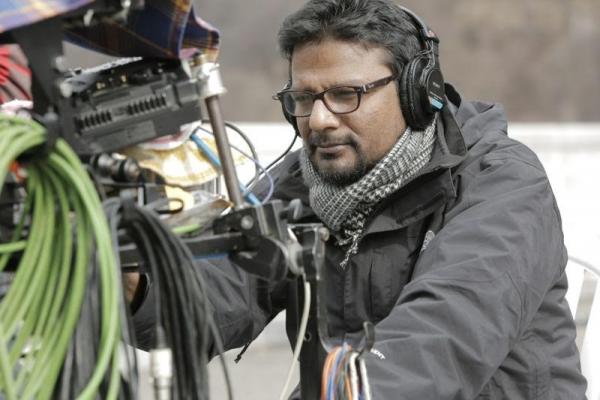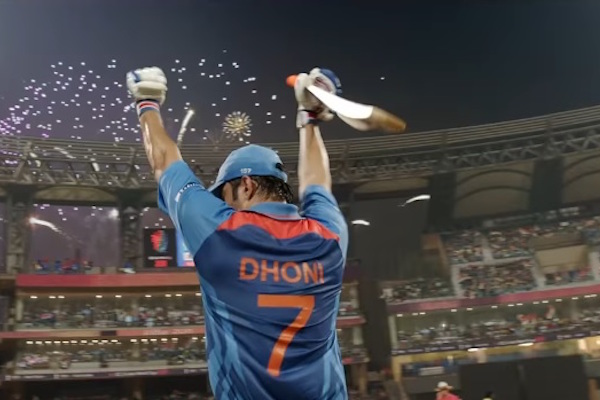We recreated the stadium ambience inside a sound studio: Debasish Mishra
When television sets had not hit the market, people would listen to cricket matches on their radio sets. Yes, television brought visuals along but sound never lost its relevance and charm in the game. Till date, when the deciding over of a match is bowled, the volumes are pumped up. This tells us about the massive responsibility of sound designing in a film around cricket in the country.
M.S.Dhoni: The Untold Story hits theatres today and to ensure that everything from the toss to the presentation ceremony sounded perfect in the film, Debasish Mishra has handpicked the tiniest of sound in his sound design. Pandolin spoke with Mishra about his association with director Neeraj Pandey, designing sound for this film and the advancements in the field of sound designing.

Debasish Mishra, Sound Designer, M.S.Dhoni: The Untold Story
You have worked with Neeraj Pandey before. When did he discuss Dhoni with you and what was his brief for you?
The discussion happened while we were shooting for Baby. I have done three films with Neeraj – Special 26, Baby and Rustom. He’s been working on this film (research and preps) for the last three years. So when Baby released, we had a brief discussion. From there on the process started.
Neeraj is the kind of person who doesn’t spoon-feed you. He refrains from telling too much and expects his team members to come up with original ideas and approaches. If he likes something, then he’ll incorporate it. But if he doesn’t, he’ll very openly dissect it and ask for a changed approach. So, when we started, he encouraged me to first come up with what I thought should be the design. Yes, there was a basic brief that it’s a cricket film and the stadium energy should match what we witness in actual matches. As a matter of fact, that was the biggest challenge because we did not have any stock sound for that. We have recreated all the stadium ambience in a sound studio.
READ: THE MOVIE IS ABOUT THE MAKING OF MS AND HIS JOURNEY – NEERAJ PANDEY
While designing sound, what was your vision? Anything specific that you tried to achieve or avoid?
The vision was very clear, that it’s a biopic and is set in a real space. So, whatever soundscape we hear in the film had to be in the real space. Nothing could sound out-of-place. For example, if we are showing Dhoni’s early days in Ranchi, then the sounds had to be from the same region and as close to reality as possible.
I have done something in this film that I don’t get to do in every other film. We took around 150 people in the studio just to create that stadium feel. That turned out to be a fantastic idea. Technically I am satisfied with the output.
We took around 150 people in the studio just to create that stadium feel. That turned out to be a fantastic idea.
Can you talk in detail about this process of recreating the ambience in a studio?
We wanted a studio where we could accommodate a crowd of around one fifty people. We took the crowd to the YRF Music One studio. They have a bigger music room. We used a surround 5.1 mic. It records sound similar to the way that you listen to in surround sound films. We put the mic in the centre and let the crowd react to situations from the scene. Just recording the audio didn’t finish the job. There was a lot of post production involved with that audio. When you record an audio on a 5.1 system you also have to decode it. Decoding that was a tough process because we had nearly 200 tracks of just the cheering of the crowd. So, that was huge. There was also a pressure of finishing the project in the stipulated time without compromising on the quality.
READ: A SOUND DESIGNER IS SOMEONE WHO USES SOUND TO TELL HIS STORIES – MARK MANGINI
The film is a biography, set more or less in the present time. How did you research for it keeping in mind your cinematic liberties?
We did not take too much cinematic liberty in this film. It’s because we didn’t have to. The way that it’s been shot is very realistic. It’s factual, so there was little space for fantasy and we did not want to create unnecessary drama. Having said that, there are certain aspects in the film where we have taken that leap of faith.
We have taken direct references from matches. I am an avid follower of cricket and have watched lots of matches live, so I had a hang of its soundscape. We didn’t get an opportunity to record sound live from a match. But the point is that even if one records the live audio of a match, the audio file should gel with the narrative of the film. So, recreating the ambience was quintessential.

Still from M.S.Dhoni – The Untold Story
What about location sound recording?
It is not a sync sound film. It is a completely dubbed film. The reason being Neeraj’s focus on the actors achieving the correct dialect, pitch and tonality. He is very particular about working in detail about how the film sounds. The dialogues of the actors have to sound perfect for him, which means not even a single notch higher or lower. This was to be achieved in the post production.
For the location sound recording I sent one of my assistants to get as many ambience and effects as possible so that we could play with them. There are a couple of real locations where Dhoni used to practice. The film travels to all those locations. There is a factory shown in the film where they make all the cricketing gears such as bats and bails. There we have got a very unique sound, which is unlike the typical furniture cutting sound. It has its own pastel to it. So, we have used such realistic sounds in the film.
It is a completely dubbed film. The reason being Neeraj’s focus on the actors achieving the correct dialect, pitch and tonality
What equipment did your sound person carry?
Nowadays, there are a variety of portable digital recorders available. My person was carrying Zaxcom Diva 5.8 recorder. Along with that they carried different kinds of shotgun mics (Boom).
READ: BEGINNER’S GUIDE TO SOUND DESIGNING
What was the total duration of Sound post production?
It took nearly two and a half months. This includes everything right from dubbing, ambience, Foley, pre-mixing and mixing. A lot of post production happens simultaneously so we save lots of studio cost. (Laughs)
What were the major challenges that you faced while doing the post? How did you overcome them?
The most challenging part was to work with actors who are not well versed with dubbing. In this film, lots of actors had their first encounter with dubbing. The only key to this problem is persistence. With repetitions one achieves naturality. Sometimes we would cancel shifts and come afresh the next day. So, one uses all sorts of methods. It’s a game of trial and error.
The most challenging part was to work with actors who are not well versed with dubbing

Still from M.S.Dhoni – The Untold Story
Did you also go back to locations for recording ambience?
Yes, we did a lot of that also. We went to sports clubs and stadiums and recorded local slangs of players shouting at each other on the ground. Also, sounds such as the ball hitting the bat and the ground. We could not record much as monsoons had already begun. But we got substantial material which helped us in getting the tonalities correct.
READ: SOUND COMPLETES THE VISUALS -DEBAJIT CHANGMAI
What’s your favourite software to work on?
Avid Pro Tools. It is the one stop for dubbing, ambience and Foley.
What’s the importance of Foley in this project?
Not only in this film but for any film Foley is extremely important. It’s the sound that lends a fragrance to each character. Starting from rustling of clothes, to footsteps to the cricket sounds in this film.
Foley is the sound that lends a fragrance to each character
You have years of experience. How have you seen the technology evolve in sound design?
When it comes to sound, the technology evolves extremely fast. It is not a macro change at software level but micro changes with plugins. These plugins are present in the existing software to process certain sounds. The quality of sound in films is growing every day. For example, a reverb that you hear in today’s film would be completely different from that in a film which was made six months back. We’re witnessing such a change. Having said that, these are minute changes that have happened. Nothing drastic has changed apart from DOLBY ATMOS.
But at the end of the day, whichever effect one uses, it must go with the narrative. We don’t have to hear everything in the ambience. There is a lot to be felt. The biggest compliment that I got after the trailer was out was that people thought Ravi Shastri’s commentary was from stock footage. It sounds exactly the way we hear on television or in a live stadium. But all that was recreated because you can’t use audio from television as that soundtrack would have lots of unwanted sounds, which might not be needed for the film. Also, there are copyright issues in using such files. What I mean to say is that the debate around technology is secondary. At the end of the day, the audience must be able to feel the sound without overpowering the narrative.
READ: THE WHOLE PROCESS OF SOUND DESIGNING IS ABOUT CONSTANTLY EVOLVING



